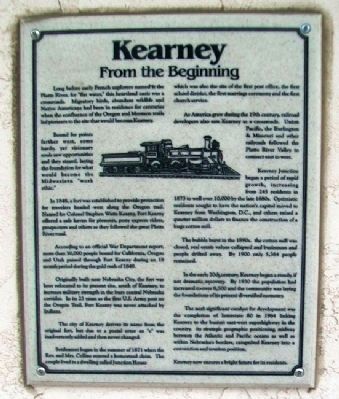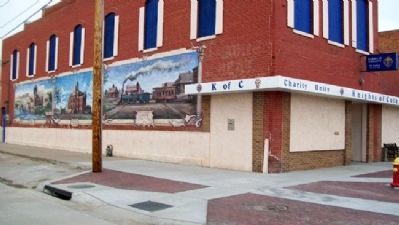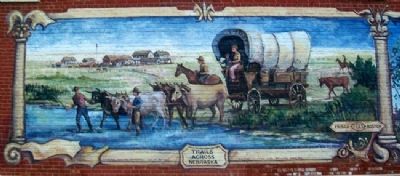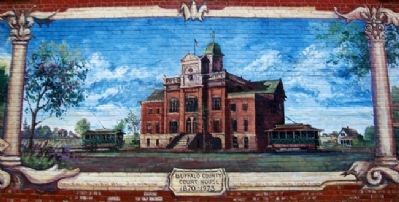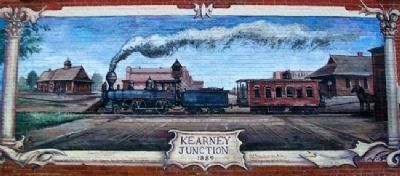Kearney in Buffalo County, Nebraska — The American Midwest (Upper Plains)
Kearney
From the Beginning
Long before early French explorers named it the Platte River, or "flat waters," this heartland oasis was a crossroads. Migratory birds, abundant wildlife and Native Americans had been in residence for centuries when the confluence of the Oregon and Mormon trails led pioneers to the site that would become Kearney.
Bound for points farther west, some hardy, yet visionary souls saw opportunities and they stayed, laying the foundation for what would become the Midwestern "work ethic."
In 1848, a fort was established to provide protection for travelers headed west along the Oregon trail. Named for Colonel Stephen Watts Kearny, Fort Kearny offered a safe haven for pioneers, pony express riders, prospectors and others as they followed the great Platte River road.
According to an official War Department report, more than 30,000 people bound for California, Oregon and Utal passed through Fort Kearny during an 18 month period during the gold rush of 1849.
Originally built near Nebraska City, the fort was later relocated to its present site, south of Kearney, to increase military strength in the busy central Nebraska corridor. In its 23 years as the first U.S. Army post on the Oregon Trail, Fort Kearny was never attacked by Indians.
The city of Kearney derives its name from the original fort, but due to a postal error an "e" was inadvertently added and then never changed.
Settlement began in the summer of 1871 when the Rev. and Mrs. Collins entered a homestead claim. The couple lived in a dwelling called Junction House which was also the site of the first post office, the first school district, the first marriage ceremony and the first church service.
As America grew during the 19th century, railroad developers also saw Kearney as a crossroads. Union Pacific, the Burlington & Missouri and other railroads followed the Platte River Valley to connect east to west.
Kearney Junction began a period of rapid growth, increasing from 245 residents in 1873 to well over 10,000 by the late 1880s. Optimistic residents sought to have the nation's capitol moved to Kearney from Washington, D.C., and others raised a quarter million dollars to finance the construction of a huge cotton mill.
The bubble burst in the 1890s. [T]he cotton mill was closed, real estate values collapsed and businesses and people drifted away. By 1900 only 5,364 people remained.
In the early 20th century, Kearney began a steady, if not dramatic recovery. By 1930 the population had increased to over 8,500 and the community was laying the foundations of its present diversified economy.
The next significant catalyst for development was the completion of Interstate
80 in 1964 linking Kearney to the busiest east-west superhighway in the country, its strategic geographic positioning, midway between the Atlantic and Pacific oceans as well as within Nebraska's borders, catapulted Kearney into a convention and tourism position.
Kearney now ensures a bright future for its residents.
Erected by Old Town Kearney Association.
Topics and series. This historical marker is listed in these topic lists: Exploration • Forts and Castles • Railroads & Streetcars • Settlements & Settlers. In addition, it is included in the Great Platte River Road series list. A significant historical year for this entry is 1848.
Location. 40° 41.614′ N, 99° 4.92′ W. Marker is in Kearney, Nebraska, in Buffalo County. Marker is at the intersection of Central Avenue and 19th Street, on the left when traveling north on Central Avenue. Touch for map. Marker is at or near this postal address: 1900 Central Avenue, Kearney NE 68847, United States of America. Touch for directions.
Other nearby markers. At least 8 other markers are within walking distance of this marker. Site of Bauer Drug (here, next to this marker); Old Oregon Trail (about 400 feet away, measured in a direct line); Empress Theatre (approx. 0.3 miles away); Kearney Civil War and Spanish-American War Memorial (approx. half a mile away); Historic Kearney
(approx. 0.7 miles away); University of Nebraska at Kearney (approx. 0.8 miles away); Shelton Union Pacific Depot (approx. 0.8 miles away); Baldwin Engine 481 (approx. 0.8 miles away). Touch for a list and map of all markers in Kearney.
Also see . . .
1. History of Kearney, Nebraska. (Submitted on August 28, 2012, by William Fischer, Jr. of Scranton, Pennsylvania.)
2. Kearney: From The Beginning. (Submitted on August 28, 2012, by William Fischer, Jr. of Scranton, Pennsylvania.)
Credits. This page was last revised on August 12, 2020. It was originally submitted on August 28, 2012, by William Fischer, Jr. of Scranton, Pennsylvania. This page has been viewed 736 times since then and 22 times this year. Photos: 1, 2, 3, 4, 5. submitted on August 28, 2012, by William Fischer, Jr. of Scranton, Pennsylvania.
